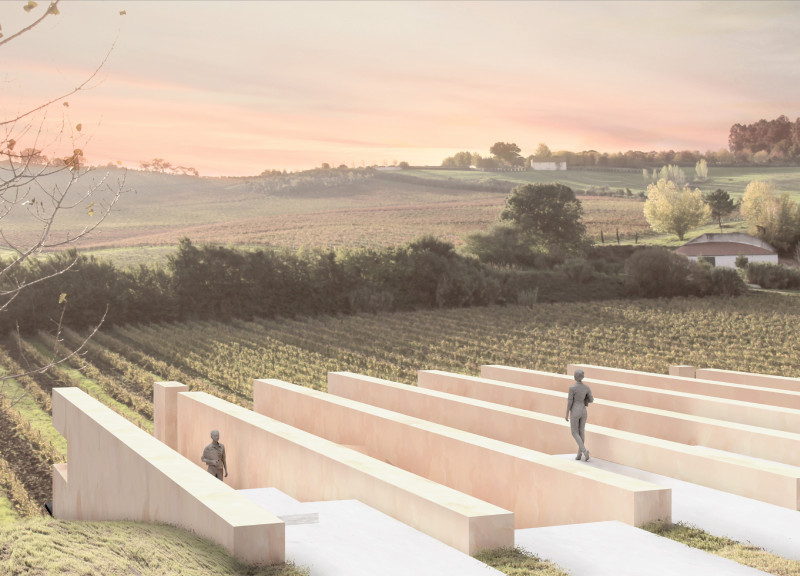5 key facts about this project
The wine tasting room is set within a beautiful landscape filled with rolling vineyards that shape its design and function. It serves as a place for people to connect with wine in a way that intertwines their experience with the natural environment. The concept centers around the idea of terroir, highlighting the close relationship between the structure and the agricultural land it occupies.
Spatial Relationships
The design creates an in-between space that offers clear views of both the vineyard and the barrel room. This arrangement helps visitors appreciate the entire winemaking process, from growing grapes to producing wine. The layout encourages movement and connectivity, allowing patrons to feel engaged with the stages of winemaking as they enjoy their experience.
Framed Views
Linear forms in the design provide framed views of the surroundings, particularly showcasing the vineyard's long rows of vines. These visual pathways encourage visitors to reflect on the complexities of winemaking. By connecting patrons with the land visually, the design amplifies their appreciation for how closely the soil and climate influence the wine they are tasting.
Material and Light
A glazed envelope is used to create transparency, allowing natural light to fill the interior. This design choice connects inside and outside, creating an open atmosphere. The light enhances the space, making it inviting and warm. Visitors can feel a sense of unity with the landscape as the sun moves across the sky, bringing nature into their tasting experience.
Design Detail
Tables in the tasting area are designed to match the height of the land outside. This detail fosters a direct relationship between visitors and the vineyard, reminding them of the source of their wine. As people taste and socialize, they remain aware of the land that nurtured the grapes, integrating their enjoyment with the essence of the region. The design invites visitors to immerse themselves in both the wine and the landscape, creating a meaningful connection.






















































